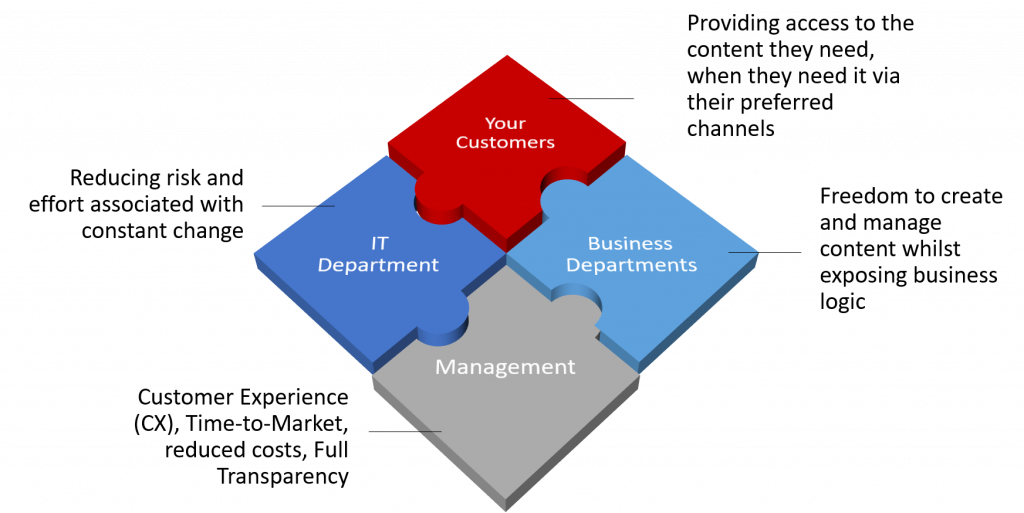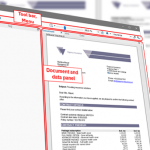The Management Circle Report: Why a document strategy?
Last week, we asked the enterprise managers and directors attending Papyrus Software Open House Global 2022 to discuss and exchange experience on a number of key business and IT topics. Due to its importance, the topic of document strategy was chosen first.
The Management Circle session was moderated by Senior Analyst Petra Beck from Infosys, and led by Christoph Ruhsam, Senior Manager of Papyrus Academy, who launched the discussion on digital strategy with a few thought-provoking statements.
Why a document strategy?
Information is the lifeblood of any business. Therefore, a document strategy that governs how information is created, shared, organized, stored and used is critical for any organization.
Many companies are currently struggling with inefficiencies, despite spending a lot of money on technology, because they lack a company-wide document strategy. Without it, the rapidly increased numbers of digital channels lead to inability to properly engage and service the customer, to document inconsistency and complexity in creating and distributing the business communication.
How well document strategy is defined, enabled and enforced has a major impact on efficiency, customer satisfaction (CX) and time to market, as well as compliance and risk reduction, protection of sensitive data, costs and more. In an ideal setting, document strategy works across multiple areas, teams and enterprise in support of company’s needs and objectives to:
- Make the Business happy by giving non-technical users the freedom to create, change and maintain content, exposing business rules and logic and creating communication, campaigns and mailings over digital and physical channels on their own
- Make the IT happy by avoiding useless work, reducing IT involvement, freeing up resources, and reducing risk
- Make the Management happy by enforcing the brand, accelerating time to market, elevating Customer experience (CX), and achieving full transparency, and above all
- Make Customers happy by helping provide top customer service and giving customers access to the content they want, when and where they want it

Document strategy takeaways
We asked our Management Circle guests for their point of view on the document strategy, and which aspects provide the most friction in their organizations right now.
We are happy to share with you some key takeaways:
![]() All participants answered with a clear “Yes” the question on the need for the empowerment of the Business. According to the general opinion of the discussants, the enablement of the Business to take the ownership of business document and related processes is only possible through adequate technology enablement and appropriate guidance. Non-technical business users need a self-explaining, easy-to-use tool and a reliable system that should be so good that they can perform all business tasks by themselves – without relying on IT. The benefits are time & cost savings and efficiency, as well as reduction of communication overhead with the IT department and elimination of correction loops. Discussants were confident that such empowerment, if done properly, should work without major difficulties.
All participants answered with a clear “Yes” the question on the need for the empowerment of the Business. According to the general opinion of the discussants, the enablement of the Business to take the ownership of business document and related processes is only possible through adequate technology enablement and appropriate guidance. Non-technical business users need a self-explaining, easy-to-use tool and a reliable system that should be so good that they can perform all business tasks by themselves – without relying on IT. The benefits are time & cost savings and efficiency, as well as reduction of communication overhead with the IT department and elimination of correction loops. Discussants were confident that such empowerment, if done properly, should work without major difficulties.
![]() With regard to the necessary organizational structure that would enable Business to take ownership of the business communication, participants recommended that Business and IT should join forces in teams of business and IT staff. Bringing people to work together in cross-functional ‘fusion’ teams has proven to be of value for both Business and IT, however, it can be a challenge for some organizations to get there.
With regard to the necessary organizational structure that would enable Business to take ownership of the business communication, participants recommended that Business and IT should join forces in teams of business and IT staff. Bringing people to work together in cross-functional ‘fusion’ teams has proven to be of value for both Business and IT, however, it can be a challenge for some organizations to get there.
The process of setting priorities was assessed as a critical success factor – such a process is usually difficult as responsibilities often lie in different company departments, leading to “island perspectives”.
Another important aspect mentioned was awareness and support by the C-level Management. This kind of change needs to be well planned and managed; it takes time and energy, and therefore it needs to be fully supported by the top management from the very beginning.
In most companies, Business and IT are still not used to seamlessly work together, which can be a potential impediment, especially when thinking of an agile setup. Companies are only at the beginning of this transition, so there is generally not yet much experience in this regard.
And last but not least, especially in the middle management there is a lot of fear of losing power, which has also to be taken into account.
![]() Decoupling document applications from the core business applications (ERP/CRM) results in significant cost savings and high performance. According to the participants, decoupling is not only possible, but is state of the art. The process includes the analysis of legacy applications and must ensure that it is economical and leads to legal compliance of the applications and documents. There are three possible ways to achieve it:
Decoupling document applications from the core business applications (ERP/CRM) results in significant cost savings and high performance. According to the participants, decoupling is not only possible, but is state of the art. The process includes the analysis of legacy applications and must ensure that it is economical and leads to legal compliance of the applications and documents. There are three possible ways to achieve it:
- Develop new interfaces (APIs) for the legacy apps
- Use legacy applications until documents are not needed any more (EOL)
- Make a completely new separate development
![]() One of the most important discussions revolved around the issue of shadow IT, which is seen as one of the biggest challenges in implementing the corporate strategy. When prioritizing projects, sometimes there is a functionality that a business department needs quickly, so they look for a quick workaround in the form of a solution that is not owned or controlled by the IT organization. Shadow IT is inherently not strategic and carries a number of dangers that no one should take lightly.
One of the most important discussions revolved around the issue of shadow IT, which is seen as one of the biggest challenges in implementing the corporate strategy. When prioritizing projects, sometimes there is a functionality that a business department needs quickly, so they look for a quick workaround in the form of a solution that is not owned or controlled by the IT organization. Shadow IT is inherently not strategic and carries a number of dangers that no one should take lightly.
The participants agreed that the first step to achieve awareness of the top management is to calculate the costs of doing it the right way vs. costs of Shadow IT. Next, the IT department must stop bearing the costs of shadow IT and in this way contribute to the spread of shadow IT itself. Ultimately, the top management has to play a vital role in enforcing the overall business strategy and addressing the problem with Shadow IT. Otherwise, companies will run into a number of challenges with legal compliance, storage, security, GDPR and so on, with the potential benefits of a strategic approach falling by the wayside.
Conclusion
There is no one-size-fits-all enterprise document strategy. Each organization has its own approach, but there are many common aspects and challenges shared by all. While it is imperative to stop the proliferation of shadow IT, companies are looking for new ways to free up IT and deliver faster by removing the boundary between business and IT in a controlled way.
The future of work builds on the partnership of Business and IT. By Empowering the Business and engaging people from all areas of business and technology in multidisciplinary ‘fusion teams’, companies expect to deliver faster and position themselves ahead of their competitors.
The transformation needs to be supported by enabling technology that takes the pressure off IT and puts the Business in control so that non-technical staff can meet their own needs and create and improve customer-centric communications and processes for improved quality and outcomes.
What is your experience? What aspects do you think are the most important or most challenging for your organization?
Join the conversation and share your thoughts: documentstrategy@isis-papyrus.com
Senior Manager Brand Marketing
Vienna, Austria






